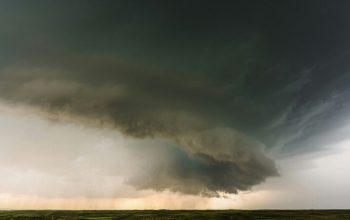Passover Begins April 15
Passover is the Jewish holiday centered around the retelling of the Biblical story of the Jewish people being freed from slavery in Egypt. Every family has its own Passover rituals, which may reflect family tradition or the denomination of Judaism. Passover will take place from sundown on Friday, April 15 and ends the evening of Saturday, April 23, 2022.
Passover commemorates the Biblical story of Exodus, where G-d freed the Israelites from slavery in Egypt. The celebration of Passover is prescribed in the book of Exodus in the Old Testament (in Judaism, the first five books of the ‘Old Testament’ are called the Torah). The holiday is often celebrated for eight days and incorporates themes of springtime, a Jewish homeland, family, remembrance of Jewish history, social justice and freedom, including recognizing those who are still being oppressed today. All of these aspects are discussed, if not symbolically represented, during the Passover seder.
Passover is divided into two parts; the first two days and last two days (the latter commemorating the splitting of the Red Sea) are full-fledged holidays. Holiday candles are lit at night, and kiddush and sumptuous holiday meals are enjoyed on both nights and days. The middle four days are called Chol Hamoed, semi-festive “intermediate days,” when most forms of work are permitted.
To commemorate the unleavened bread that the Israelites ate when they left Egypt, we don’t eat, or even retain in our possession—any chametz from midday of the day before Passover until the conclusion of the holiday. Chametz means leavened grain, any food or drink that contains even a trace of wheat, barley, rye, oats, spelt or their derivatives. This includes bread, cake, cookies, cereal, pasta, and most alcoholic beverages. Instead of chametz, we eat matzah—flat unleavened bread.
The highlight of Passover is the Seder, observed on each of the first two nights of the holiday. The Seder is a fifteen-step family-oriented tradition and ritual-packed feast. The Hebrew word “seder” translates to “order,” and the Passover seder is a home ritual blending religious rituals, food, song, and storytelling. Families hold a seder on the first and sometimes second night of Passover. It is fundamentally a religious service set around a dinner table, where the order in which participants eat, pray, drink wine, sing, discuss current social justice issues and tell stories is prescribed by a central book called the Haggadah.
For the first two nights of Passover the Seder table holds a Seder plate filled with six items. Karpas (a green vegetable, most often parsley). Karpas represents the initial flourishing of the Israelites during the first years in Egypt. Karpas also symbolizes the new spring. Haroset (sweet fruit paste symbolizing mortar). This mix of fruits, wine or honey, and nuts symbolizes the mortar that the Israelite slaves used to construct buildings for Pharaoh. Normally made from a base of apples, it sometimes includes figs and dates. Maror (bitter herb, often horseradish). This bitter herb allows us to taste the bitterness of slavery. Hazeret (second bitter herb, often Romaine lettuce). Zeroa (shank bone). A roasted lamb shank bone that symbolizes the lamb that Jews sacrificed as the special Passover offering when the Temple stood in Jerusalem. The zeroa does not play an active role in the seder, but serves as a visual reminder of the sacrifice that the Israelites offered immediately before leaving Egypt and that Jews continued to offer until the destruction of the Temple. Beitzah (egg). A roasted or hard-boiled egg that symbolizes the hagigah sacrifice, which would be offered on every holiday (including Passover) when the Temple stood. The roundness of the egg also represents the cycle of life — even in the most painful of times, there is always hope for a new beginning.
The focal points of the Seder are: Eating matzah – to commemorate the matzah the enslaved Jews ate in Egypt and the dough that did not have enough time to rise when the Jews fled Egypt. Eating bitter herbs – to commemorate the bitter slavery endured by the Israelites. Drinking four cups of wine or grape juice– a royal drink to celebrate our newfound freedom. The recitation of the Haggadah, a liturgy that describes in detail the story of the Exodus from Egypt. The Haggadah is the fulfillment of the biblical obligation to recount to our children the story of the Exodus on the night of Passover. It begins with a child asking the traditional “Four Questions.”
One purpose of the Seder is to encourage inquisitiveness in Jewish children. Children play a key role in the ceremony by asking four scripted questions during the dinner. The “Four Questions” are: 1) Why is it that on all other nights we need not dip even once, and on this night we dip twice? We take a vegetable and we dip it in salt water. The vegetable is to remind us of simplicity. No matter how high we climb in our own life, we need to maintain some sense of simplicity. The salt water is to remind us of the tears from when we were slaves in Egypt. It is so important to remember that we have suffered. Another example of this is that at the peak of a Jewish wedding, the custom is to break a glass. The glass is to symbolize that, no matter how happy we are, we always remember that we are missing something.
2) Why is it that on all other nights we eat leavened bread or matzah, and on this night only matzah? See the answer above. 3) Why is it that on all nights we eat various vegetables, and on this night, bitter herbs? The bitter herbs are to remind us of the bitterness of the slavery in Egypt. Even though we celebrate freedom, we never forget where we came from. 4. Why is it that on all nights we eat sitting upright or reclining, and on this night we all recline? We lean to the side as if we are very comfortable. Reclining represents this idea of freedom. It is an expression of being free.
On Passover, we can greet one another with “Chag Pesach sameach!” which means “Happy Passover!” and some people wish each other a “sweet Pesach,” or, in Yiddish, a “ziessen Pesach.” If you do not want to try your hand at Hebrew or Yiddish, just wish your Jewish neighbors a Happy Passover!







